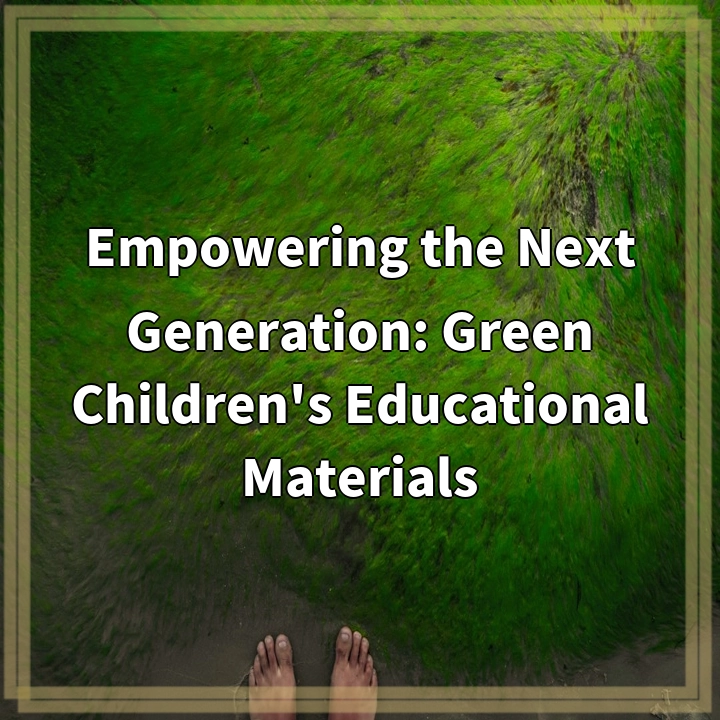
What it is:
Green Children’s Educational Materials are educational resources targeted towards children, designed to promote awareness and understanding of environmental issues. These materials help to engage young minds in sustainable learning, fostering a sense of responsibility and encouraging environmentally-friendly behaviors.
Real-world problems:
While Green Children’s Educational Materials have the potential to have a significant positive impact, they also face a few challenges that need to be addressed:
1. Limited availability:
One of the major challenges is the limited availability of high-quality and accessible green educational materials. Many schools and educational institutions lack the resources or knowledge to incorporate sustainability-focused subjects into their curriculum.
2. Lack of diversity:
Another issue is the lack of diversity in green educational materials. It is important to provide a range of perspectives and experiences, ensuring that children from all backgrounds can relate to and learn from these resources.
3. Age-appropriate content:
Developing age-appropriate content is crucial to effectively engage children in learning about environmental issues. The content needs to be engaging, interactive, and tailored to different age groups, ensuring that it captures their attention and effectively conveys the message.
4. Measuring impact:
Measuring the impact and effectiveness of green children’s educational materials is another challenge. It is important to assess whether these materials are actually achieving their intended goals of promoting environmental awareness and inspiring sustainable behavior changes.
Through strong collaborations between educators, environmental organizations, and creative content creators, the challenges associated with Green Children’s Educational Materials can be overcome. By addressing these issues, we can empower the next generation and equip them with the knowledge and passion to create a sustainable future.

Solutions to the Challenges:
To address the challenges surrounding Green Children’s Educational Materials, we can implement the following solutions:
1. Increasing accessibility:
To overcome the limited availability of green education materials, it is important for educational institutions and organizations to collaborate in developing and distributing these resources. Online platforms, partnerships with local libraries, and community initiatives can help make these materials more widely accessible.
2. Diversifying content:
Creating more diverse green educational materials involves actively seeking out and including perspectives and experiences from marginalized communities. This can be done through collaborations with educators, cultural organizations, and community leaders, ensuring that children from all backgrounds see themselves represented and engaged in the learning process.
3. Tailoring content for different age groups:
To effectively engage children, content creators should design age-appropriate materials that take into consideration the cognitive and emotional development of different age groups. Interactive activities, games, and visual aids can be incorporated to make the learning experience more enjoyable and impactful.
4. Evaluating impact:
To measure the impact of green educational materials, educators and researchers can conduct surveys, assessments, and feedback sessions to gauge the effectiveness of these resources. This feedback can help improve existing materials and guide the development of future content, ensuring that they effectively deliver environmental knowledge and inspire sustainable actions.
By implementing these solutions, we can overcome the challenges associated with Green Children’s Educational Materials. This will empower the next generation with the knowledge, skills, and passion to make informed choices and take actions that contribute to a more sustainable and greener planet.















